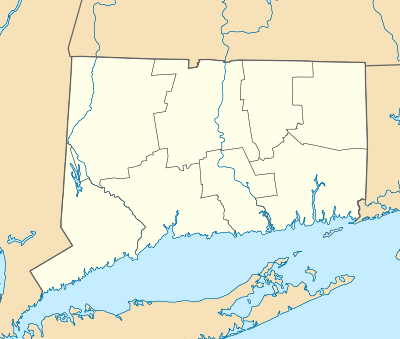Eells-Stow House
The Eells-Stow House is a historic house museum at 34 High Street in Milford, Connecticut. With a construction history dating to c. 1700, it is believed to be Milford's oldest surviving building, with a complex history of later additions and alterations. It was listed on the National Register of Historic Places in 1977.[1] It is now owned by the Milford Historical Society.[2][3]
Eells-Stow House | |
 The Eells-Stow House on the Milford Historical Society property, Milford, Connecticut. | |
  | |
| Location | 34 High St., Milford, Connecticut |
|---|---|
| Coordinates | 41°13′8″N 73°3′28″W |
| Area | 1 acre (0.40 ha) |
| Built | c. 1700–1720 |
| Architectural style | First Period |
| NRHP reference No. | 77001407[1] |
| Added to NRHP | June 17, 1977 |
Description and history
The Eells-Stow House is one of three houses that make up the campus of the Milford Historical Society, located on the south side of High Street east of Green Street south of its downtown. It is a 2-1/2 story wood-frame structure, with a gabled roof and clapboarded exterior. Its front facade is four bays wide, with a large chimney centered on one of the central bays, and the main entrance on the other. A leanto section, probably added in the late 18th century, extends to the rear, giving the house a saltbox profile. A two-story 19th-century ell is partially built over the leanto and another, older addition. The interior includes exposed construction elements, revealing the different stages of construction.[3]
The oldest portion of the house is believed to date to c. 1700, and was built by Samuel Eells, a prominent local citizen. During the American Revolutionary War it was owned by Stephen Stow and Freelove Baldwin Stow; the former notably housed prisoners of war who had contracted smallpox, and eventually succumbed to the disease himself. The exact sequence of construction of the building's elements was historically a subject of debate among Connecticut's leading architectural historians, including Norman Isham and J. Frederick Kelly.[3]
See also
References
- "National Register Information System". National Register of Historic Places. National Park Service. March 13, 2009.
- Milford Historical Society website
- "NRHP nomination for Eells-Stow House". National Park Service. Retrieved 2015-01-20.